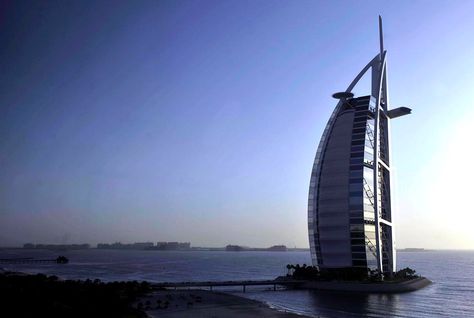Bloomberg Business Week’s 2015 edition of World Hotel Index: Cities has revealed that Dubai hotel rates have dropped by 6.4% in 2015, making it the fourth most expensive city in the world for hotel stays, compared to last year’s index ranking at second place.
Average daily rate in Dubai has fallen 6.4% from US $273 to $255, according to the index.
STR Global’s preliminary results for May 2015 for the UAE revealed that average daily rate had fallen 8.5% to AED 709.10 (US $193.05) and revenue per available room has also gone down by 6.4% to AED 567.50 (US $154.52).
Commenting on the newly published index, Chris Hewett, associate director, TRI Consulting said: “Hotel rates in Dubai have reduced primarily due to the drop in demand from Russia as well as the weaker Euro, which had impacted the spending power of European visitors.
“The decline in demand from these strong markets has forced hotels to lower room rates in order to maintain market share as well as look into alternative source markets which might not necessarily have the same rate premium.
“Furthermore, the increase in supply is having a secondary impact as new hotels, particularly in the mid-market segment, adopt aggressive pricing strategies in order to penetrate the market and secure their fair share of demand.
Dubai came in behind San Francisco, Geneva and Milan, which were ranked at first, second and third place respectively.

| Advertisement |
San Francisco has an average hotel pricing of $397, an 88% increase over last year, when the city ranked at 17th place with an ADR of $211. Meanwhile, ADRs for Geneva and Milan were $292 and $271 respectively.
Dubai still had higher rates than London ($227), New York ($202) and Tokyo ($198).
“In terms of the global rankings, Dubai’s position fell from 2nd place to 4th place due to significant increases in average rates from San Francisco (+88.2%) and Milan (+46.9%) rather than the reduction in rates experienced in city,” added Hewett.
PricewaterhouseCoopers’ (PwC) report Accommodating Growth, released in May, highlighted the potential issue of demand not meeting supply given falling visitor numbers.
“The authorities are aiming to double the number of hotel rooms from 2012 to 2020 and there are 15k new rooms under construction.
“The impact on room pricing is unlikely to be positive, either in the short or medium term: some operators are expecting little to negative growth in ADR in 2015, compounded by a persistently low oil price and the consequent absence of high spending CIS visitors,” the report stated.
There are 40.4% more rooms under construction in the region in May 2015, compared to May 2014, according to the latest pipeline data from STR Global.
The region reported 91,510 rooms in 351 hotels under construction for the month.
STR Global analysts said that slight uncertainty exists amongst investors in Dubai due to low oil prices; however new prospects on the horizon, such as the Dubai Design District, also should bring a new mix of visitors to the city.
PwC’s report cited leisure attractions as an opportunity for growth of the tourism sector.
In May, Dubai Parks & Resorts announced that rides are now being assembled for Legoland, film-based Motiongate and Bollywood theme park, expected to open in October 2016.
The Bloomberg gauge measured 100 cities based on the average daily cost of hotels, regardless of star ratings, for two adults in a double-occupancy room.
To account for holiday, promotion and convention-related pricing, rate calculations were taken in May for two blocks of time: August 1 to August 10 2015, and February 1 to February 10, 2016.









 Search our database of more than 2,700 industry companies
Search our database of more than 2,700 industry companies









